![]()
This past July, Nikon completed its new headquarters and moved a majority of its Tokyo-based team into the new building. Two weeks ago, the Nikon Museum — which had been temporarily closed since February — reopened on the first floor of the facility.
PetaPixel was invited to come take a look at Nikon’s new Global Headquarters and Innovation Center and was the first North American publication to see the updated working environment and relocated Nikon Museum.
![]()
City of Light
Nikon started construction on the new building in July 2022, completed it in May 2024, and officially moved a majority of its teams from the previous headquarters in Konan, Minato-Ku into it on July 29, 2024. Located where there was once a Nikon factory in Nishioi, Shinagawa-Ku, Tokyo, the six-floor headquarters features floor space of approximately 42,000 square meters (452,084 square feet). Nikon still owns and operates other teams out of two buildings across the street.
![]()
During its construction, the new general headquarters was given the project name “City of Light,” as the architecture was designed to provide ample indirect sunlight into the building which bounces into the large windows around the exterior via the specially-designed eaves. Not only does this design assure that the new building is flooded with tons of natural light, it is also meant to be energy efficient.
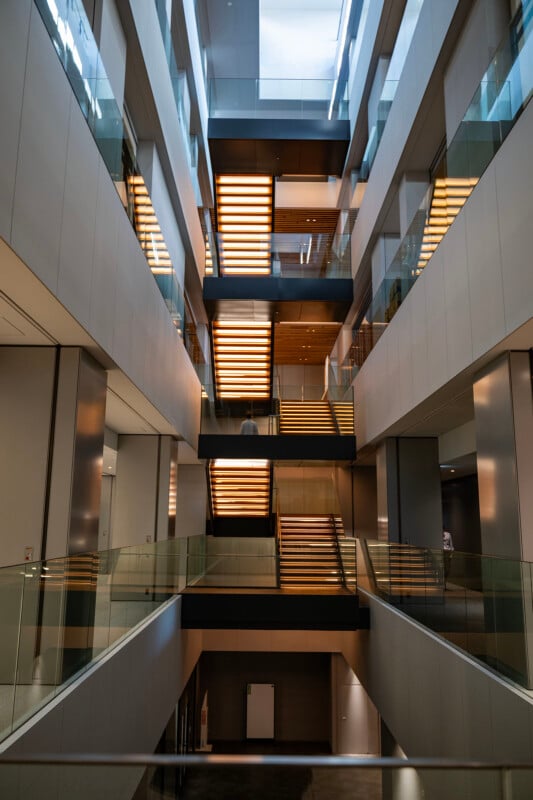
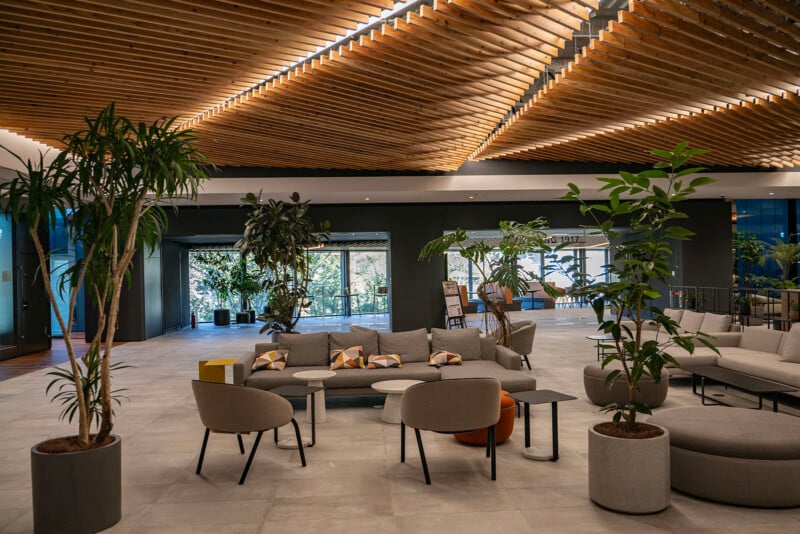

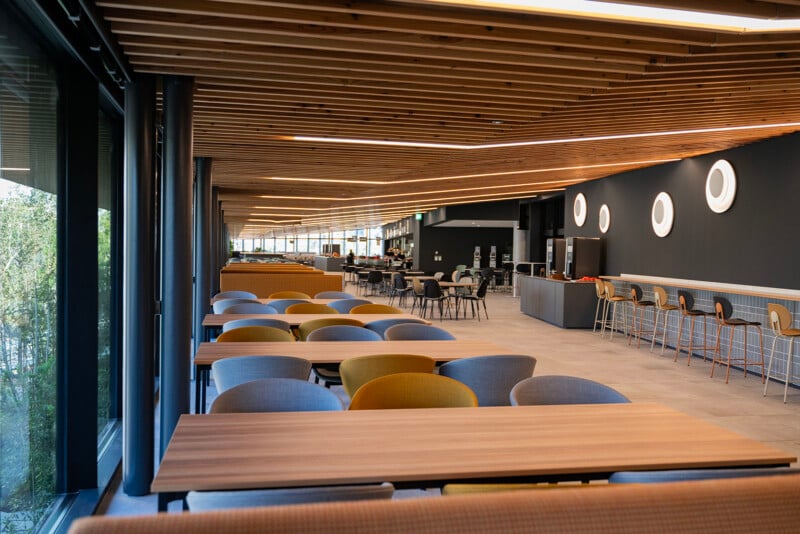
Nikon says that the architect of the Global Headquarters, Mitsubishi Jisho Design, equipped the building with a solar shielding exterior facade system to reduce the energy required for air conditioning as well as a structure that promotes natural ventilation and plentiful daylight into the space. Each room of the building can be independently heated and cooled via a variable air volume system that responds to the office utilization rate, further adding to its ability to adapt to interior and exterior conditions and save energy.
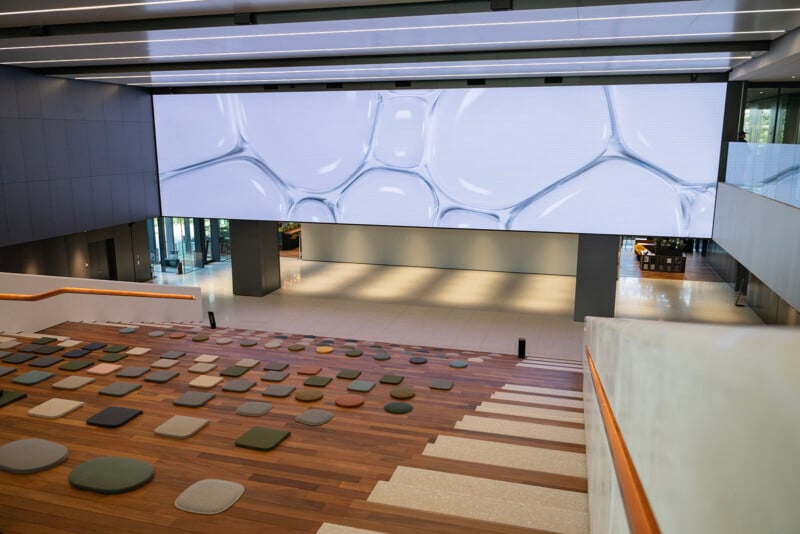
The company is incredibly proud of this aspect of the facility, as it significantly reduced energy usage and allowed it to be BELS certified (Building-housing Energy-efficiency Labeling System) and ZEB Ready (meaning it realizes a comfortable environment while reducing 50% or more of energy consumption by saving energy compared to the energy required for ordinary buildings).

For Nikon employees and visitors, though, the benefit is a facility with tall ceilings, bright rooms, and a light and airy workspace. From the ground floor to the rooftop terraces, Nikon’s new headquarters is just a pleasant place to be. It’s calm, quiet, and extremely conducive to getting work done.
Nikon’s Modern Approach to Work
Work life in Japan doesn’t necessarily have the best reputation, but Nikon’s approach to its facility not only bucks that national trends of a company, or kaisha (会社), it is surprisingly and refreshingly modern even by western standards. There are no assigned desks in the main work spaces. Instead, employees are welcome to work from anywhere in the building, from the common areas, to desk spaces (equipped with dual monitors at each station), or from the terraces.
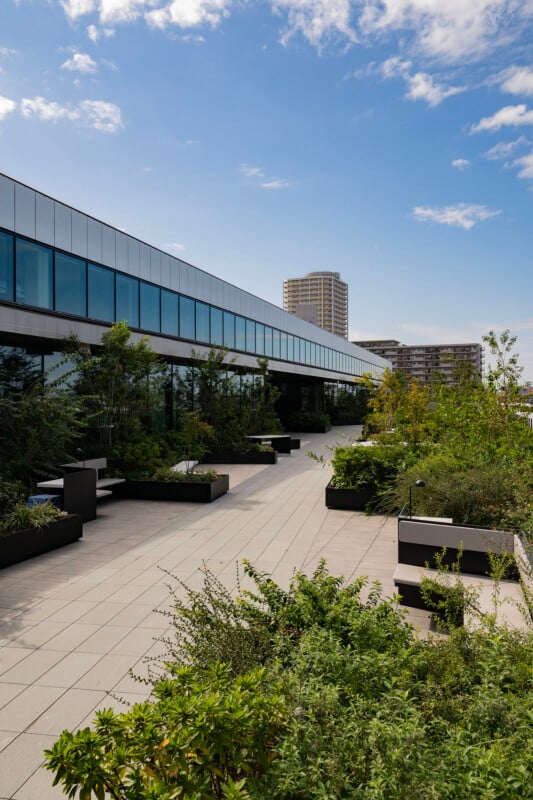
![]()
“[The Global Headquarters / Innovation Center] has been designed creatively to allow for diverse work styles. With features such as a grand staircase, dining area and outdoor terrace, employees have the choice of working in settings other than their desks,” Nikon says. “Each person is able to independently choose where to work in order to achieve their best performance depending on the task. This approach is based on a model known as Activity-Based Working.”
![]()
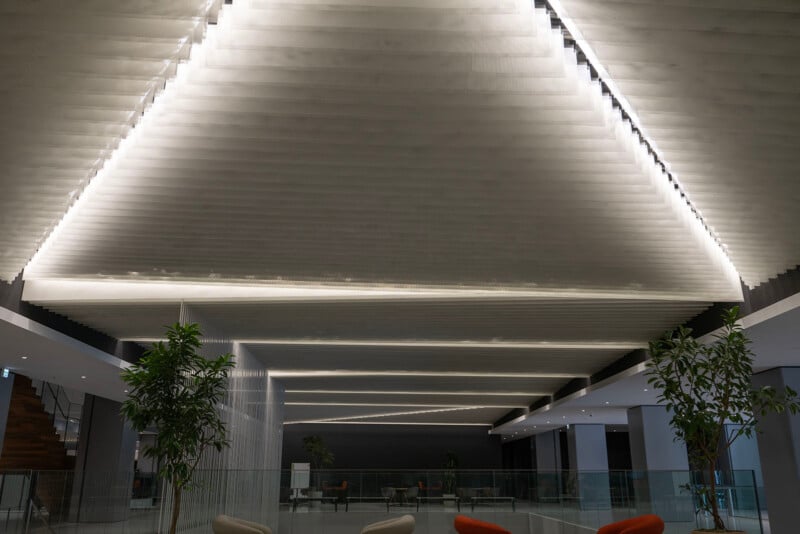
Since employees can work from anywhere, Nikon added stations of portable batteries around the building that can be used to power laptops and other electronic devices all day. The stations charge the batteries every day, leaving them ready to go for another person the next day. There appear to be plenty to fulfill demand, as even during mid-morning and early afternoon, we never saw any of these stations empty of batteries.
A Place for Everyone
The new Global Headquarters and Innovation Center is not just a building for Nikon employees. On the first level (or basement level if you come in from the main entrance) is a Lawson convenience store, eating area, and the entrance to the Nikon Museum.
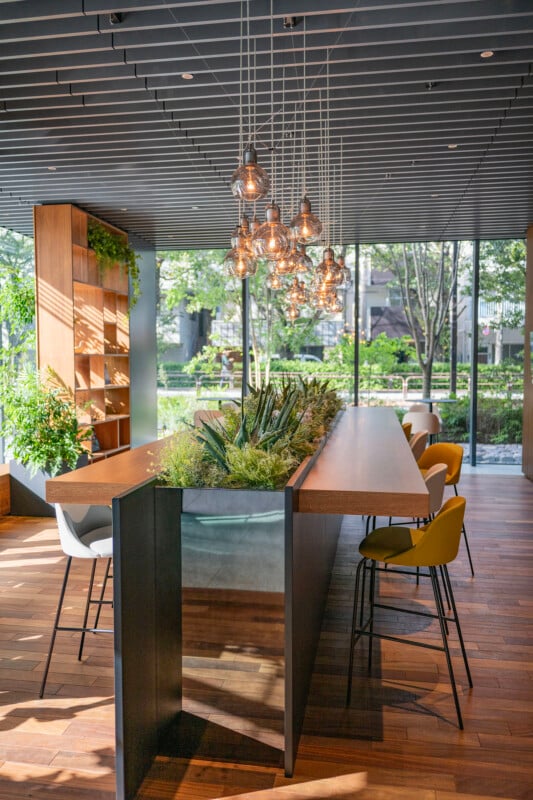
Lawson is one of the “big three” Japanese konbini and like all Lawson, the one in Nikon’s headquarters is open to the public. Fun fact: Nikon is one of many businesses inside of the Mitsubishi Group (which, as mentioned, was responsible for the architecture of Nikon’s Global Headquarters) and so is Lawson.
In Japan, it is not culturally acceptable to walk and eat, which is why the large sitting area outside of the Lawson is a nice touch. For those who would rather enjoy the weather outside, there is a quiet courtyard with seating as well — but no tables.
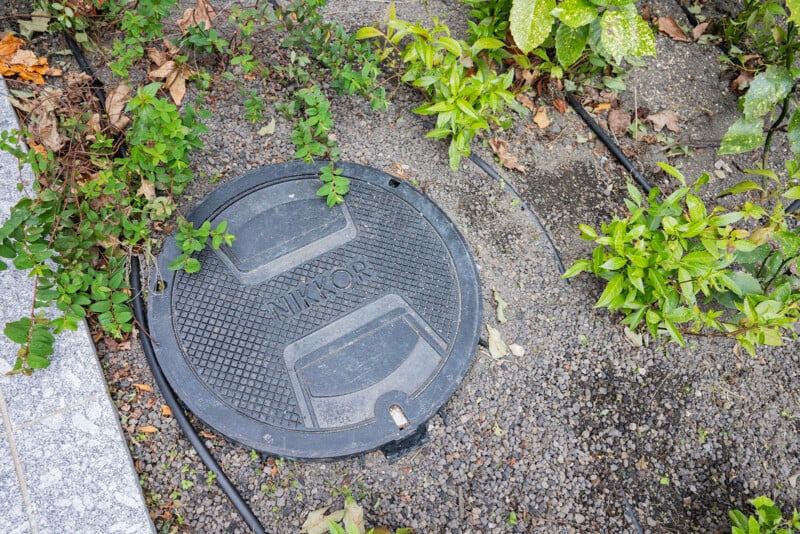
The Lawson isn’t the only aspect of the new Nikon facility that is meant for the public: the new, relocated Nikon Museum is there, too.
The Nikon Museum
Continuing on from the Lawson entrance and around the side of the Atrium’s theater seating is the entrance to the Nikon Museum. The Nikon Museum previously lived in Shinagawa and opened in October 2015 as part of the 100th anniversary of Nikon’s foundation project. From then until its closure at the end of February 2024 as it moved to the new Nikon Global Headquarters, about 190,000 people visited it.
![]()
![]()
The museum’s floor area is approximately 670 square meters — larger than the last museum — and is broken up into four zones: the entrance (and gift shop), Nikon’s business-to-business history, it’s consumer product history (cameras and lenses), and the theater. Robotics, an early Nikon semiconductor lithography system, microscopes, measuring instruments, and even a giant glass ingot (an example form which Nikon optics would be cut from) are all on display.
![]()
![]()
Nikon’s history just in cameras is extensive. Most photographers are aware that it has produced a huge number of cameras over the years but even with that knowledge it is overwhelming to see every single model on display in the museum. Compressing more than 100 years of history into one room, even though it is pretty large, is quite the visual — it’s packed, and really shows how much Nikon has done in its history with consumer cameras and lenses.
![]()
![]()
![]()
Altogether, around 1,300 Nikon products and technologies are on display in the museum and it’s the best way to visualize the company’s entire product history.
![]()
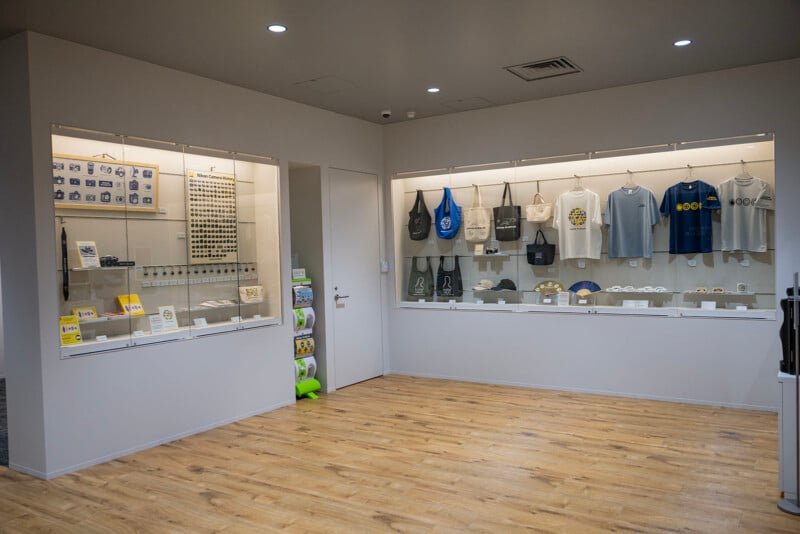
Getting to the Nikon Museum is very easy. It’s about a four minute walk from Nishioi Station (JR Yokosuka Line/Shonan-Shinjuku Line), about a 10 minute walk from Shimo-shimmei Station (Tokyu Oi-machi Line), and about a 12 minute walk from Oi-machi Station (JR Keihin-Tohoku Line, Tokyo Waterfront Area Rapid Transit Rinkai Line, Tokyu Oi-machi Line).
It is open Tuesday through Saturday from 10 AM to 5:30 PM (excluding public holidays) and admission is free. If you’re in Tokyo and want to check it out, we highly recommend stopping by if for no other reason than to enjoy seeing Nikon’s entire history laid out in one place.
Full disclosure: Nikon invited PetaPixel to Tokyo and covered airfare, room, and board.
All photos shot on Nikon Z8 by Jaron Schneider. Thank you to Nikon USA and Nikon Corporation Japan for graciously showing us the facility.
